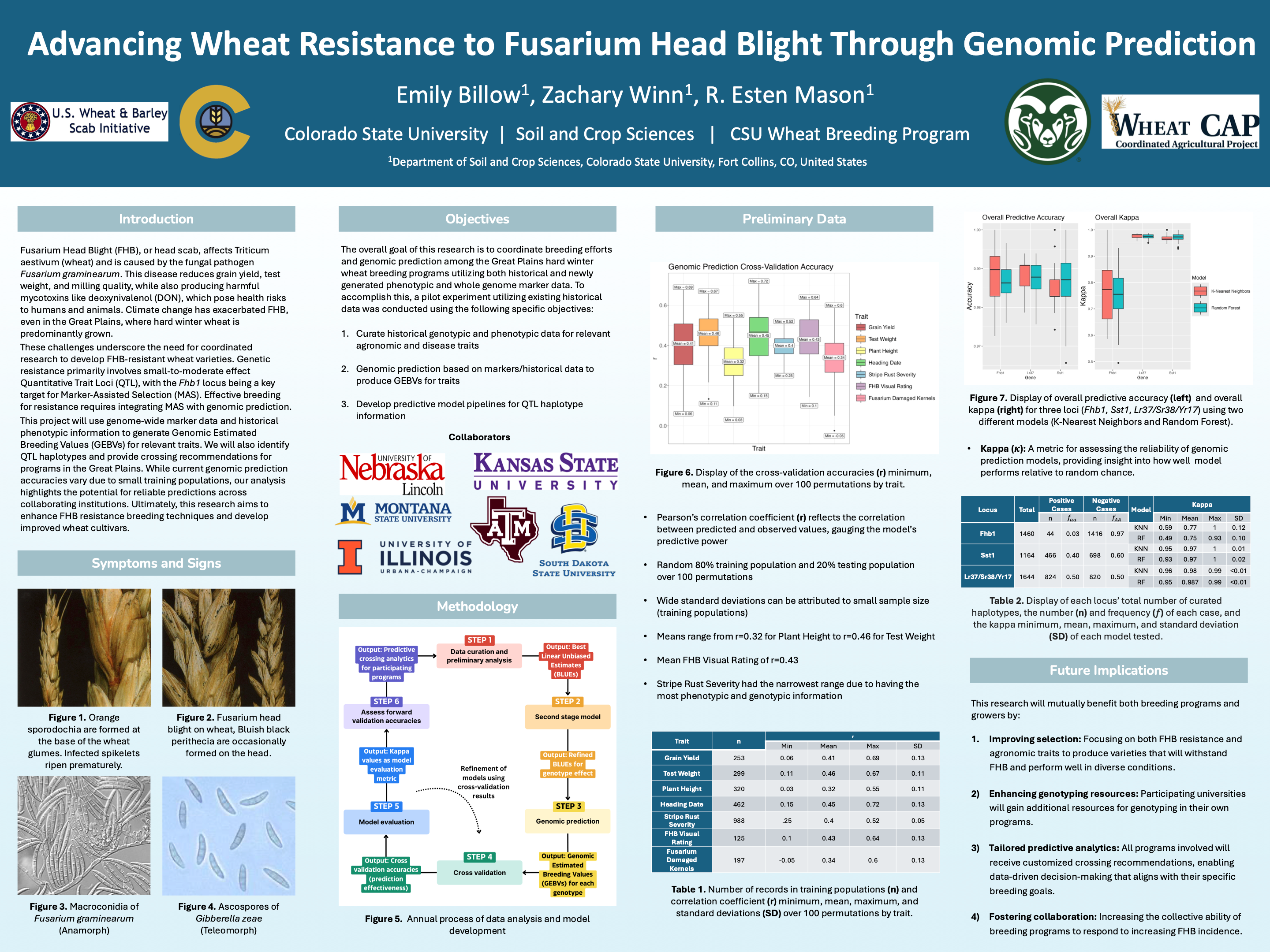Authors: Emily Billow 1, Esten Mason 1, Zachary Winn 1
1. Colorado State University, Soil and Crop Sciences, Fort Collins, CO
Corresponding Author: Esten Mason, esten.mason@colostate.edu
Presenting Author: Emily Billow
Abstract
Fusarium Head Blight (FHB), or head scab, is a disease of Triticum
aestivum caused by the fungal pathogen Fusarium graminearum. It
reduces grain yield, test weight, and milling quality, and leads to the
production of mycotoxins, such as deoxynivalenol (DON), which threaten human
and animal health. Recent climate shifts have intensified FHB outbreaks,
including in the Great Plains region of the U.S., where hard winter wheat is
predominantly grown, underscoring the need for rapid development of resistant
cultivars. Resistance to FHB in wheat is primarily governed by
small-to-moderate effect Quantitative Trait Loci (QTL), with QTL mapping widely
used for Marker-Assisted Selection (MAS). Notably, the Fhb1 locus is
considered a stable and valuable QTL for MAS, but due to the polygenic nature
of resistance, combining MAS with genomic prediction is essential to capture
broader genetic effects. This project integrates genome-wide marker data and
historical phenotypic records to generate genomic estimated breeding values
(GEBVs) for key traits supporting selection decisions. Annual line
contributions from collaborating universities were genotyped using a 25K SNP
array. In 2025, approximately 450 CSU breeding lines were screened at the
University of Illinois Urbana-Champaign (UIUC), with visual ratings collected
in-person and Fusarium-damaged kernels (FDK) data gathered post-harvest. Preliminary
analyses combining historical phenotypic records and 25K SNP genotypes yielded a mean Pearson’s
correlation of 0.43 for FHB visual ratings. While current prediction accuracies are
limited by small training populations, results highlight the potential of
expanding datasets to improve genomic prediction and accelerate FHB resistance
breeding.

